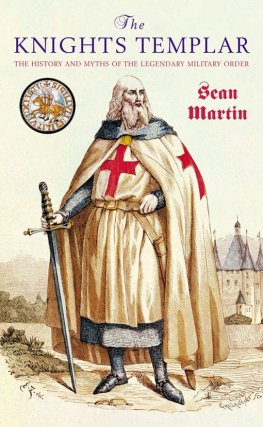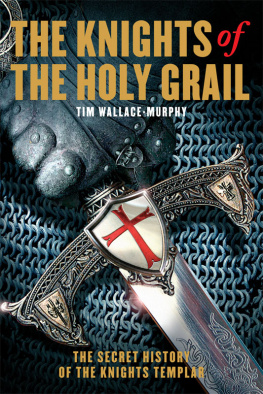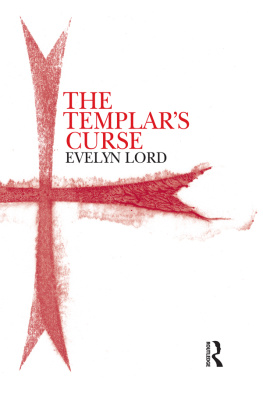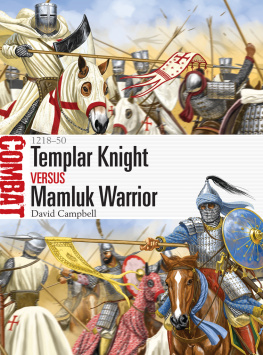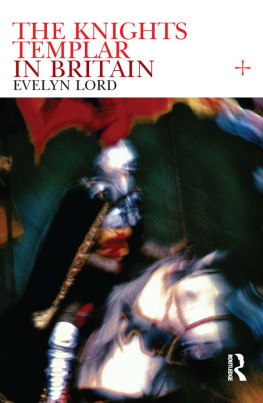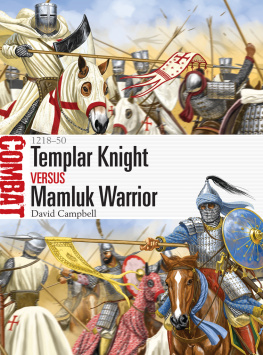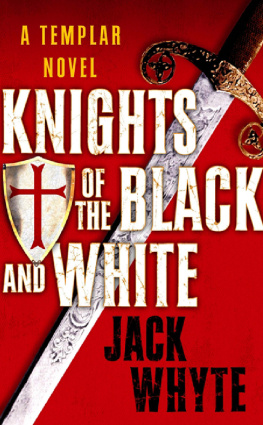Patrick Masters - The Knights Templar in Popular Culture
Here you can read online Patrick Masters - The Knights Templar in Popular Culture full text of the book (entire story) in english for free. Download pdf and epub, get meaning, cover and reviews about this ebook. year: 2022, publisher: McFarland, genre: Art. Description of the work, (preface) as well as reviews are available. Best literature library LitArk.com created for fans of good reading and offers a wide selection of genres:
Romance novel
Science fiction
Adventure
Detective
Science
History
Home and family
Prose
Art
Politics
Computer
Non-fiction
Religion
Business
Children
Humor
Choose a favorite category and find really read worthwhile books. Enjoy immersion in the world of imagination, feel the emotions of the characters or learn something new for yourself, make an fascinating discovery.

- Book:The Knights Templar in Popular Culture
- Author:
- Publisher:McFarland
- Genre:
- Year:2022
- Rating:3 / 5
- Favourites:Add to favourites
- Your mark:
- 60
- 1
- 2
- 3
- 4
- 5
The Knights Templar in Popular Culture: summary, description and annotation
We offer to read an annotation, description, summary or preface (depends on what the author of the book "The Knights Templar in Popular Culture" wrote himself). If you haven't found the necessary information about the book — write in the comments, we will try to find it.
The Knights Templar in Popular Culture — read online for free the complete book (whole text) full work
Below is the text of the book, divided by pages. System saving the place of the last page read, allows you to conveniently read the book "The Knights Templar in Popular Culture" online for free, without having to search again every time where you left off. Put a bookmark, and you can go to the page where you finished reading at any time.
Font size:
Interval:
Bookmark:
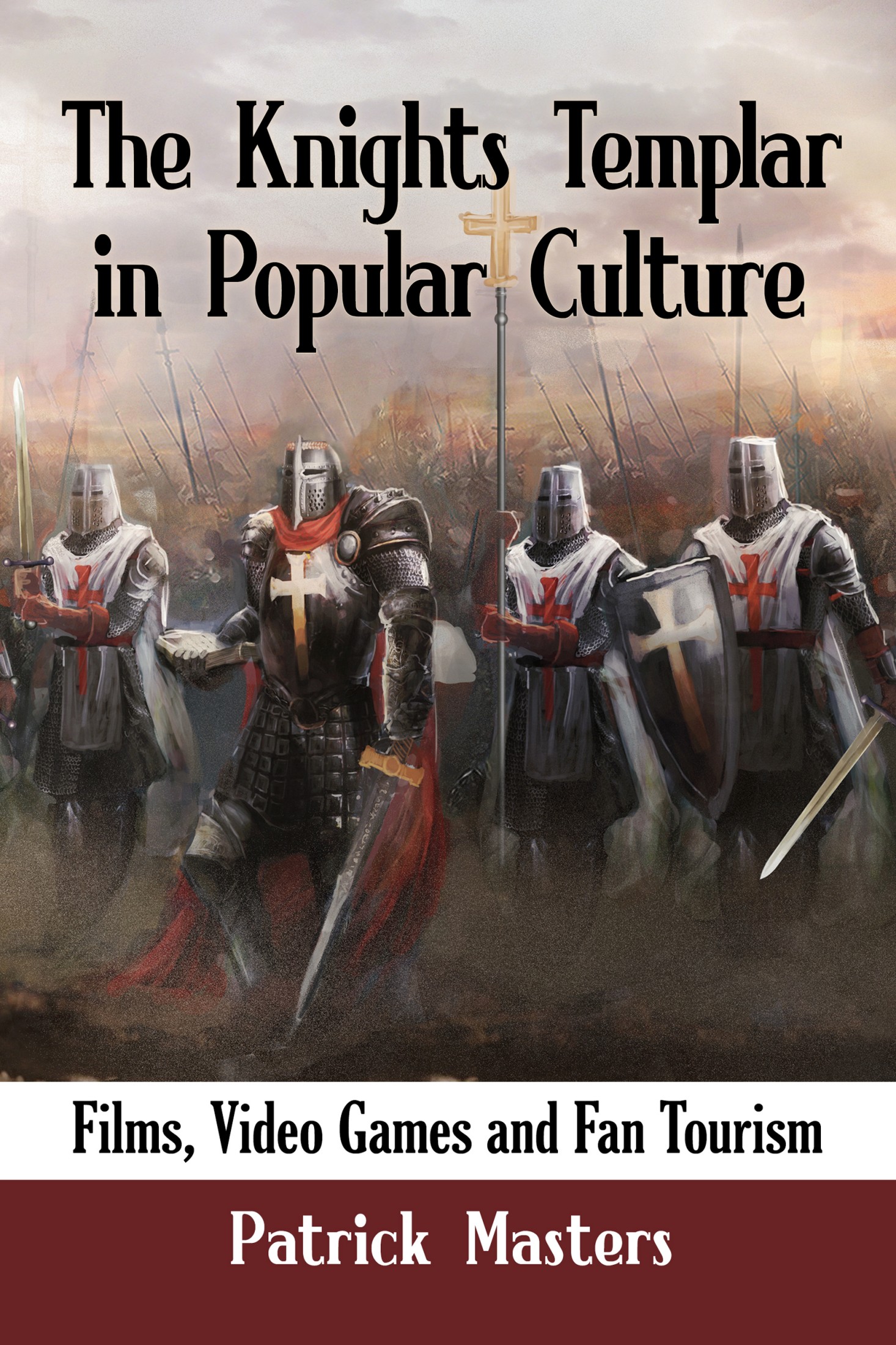
The Knights Templar in Popular Culture
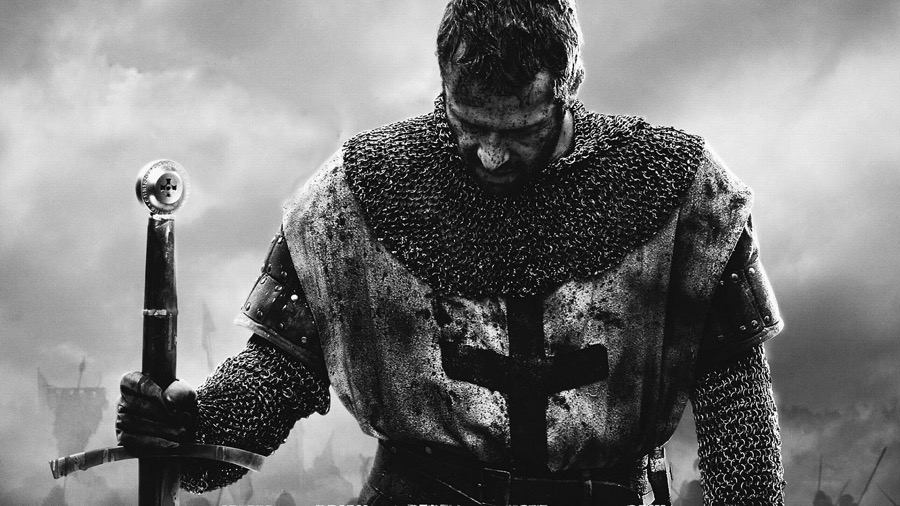
Latin cross worn by Ironclad s Templar Knight (2011, Mythic International Entertainment).

McFarland & Company, Inc., Publishers
Jefferson, North Carolina
ISBN (print) 978-1-4766-8197-9
ISBN (ebook) 978-1-4766-4571-1
Library of Congress and British Library cataloguing data are available
Library of Congress Control Number 2022001638
2022 Patrick Masters. All rights reserved
No part of this book may be reproduced or transmitted in any form or by any means, electronic or mechanical, including photocopying or recording, or by any information storage and retrieval system, without permission in writing from the publisher.
Front cover image 2022 Vuk Kostic/Shutterstock
Printed in the United States of America
McFarland & Company, Inc., Publishers
Box 611, Jefferson, North Carolina 28640
www.mcfarlandpub.com
For my wife and daughter
I would like to express my deepest gratitude to my first supervisor, Professor Geraghty, for his expert guidance, encouragement and for giving so much of his time throughout the process of researching and writing this book. I would also like to thank my supervisors Professor Shaw and Dr. Austin for their valuable input and constructive criticism. I am particularly grateful to Celia for proofreading my work for me and to Sarah, who was incredibly supportive and flexible by allowing me time off work to focus on my research at various stages throughout the years. I also wish to thank Joseph for his valuable insight into the history of Philadelphia and a brilliant tour of the city. When gaining my primary fan tourism evidence, I did not want to travel alone, so I would like to thank my friend Ben for coming to Philadelphia with me and visiting the Old Pine Church in the rain. Thank you also to my friends Helen and Ivan for coming along with me to visit Rosslyn Chapel and for allowing me to stay with you during my trip.
Finally, I would like to thank my family: firstly, my parents Brian and Nicky and sister Felicity who supported me throughout the entire project. I would like to offer a special thank-you to my wife, Charlotte, and my daughter, Violet, who continue to be my inspiration, and without their support, this book would not be possible.
Part of the introduction was published as Knights Templar: Still Loved by Conspiracy Theorists 900 Years Later, The Conversation (December 23, 2019). Retrieved from https://theconversation.com/knights-templar-still-loved-by-conspiracy-theorists-900-years-on-128582.
Part of the introduction and Chapter 1 were published as Alt-Right Claims to Match in Step with Knights TemplarThis Is Fake History, The Conversation (December 5, 2017). Retrieved from https://theconversation.com/alt-right-claims-to-march-in-step-with-the-knights-templar-this-is-fake-history-88103.
Part of Chapter 1 was published as Historical Movies: Why a Good Story Is More Important than the Facts, The Conversation (August 1, 2018) . Retrieved from https://theconversation.com/historical-movies-why-a-good-story-is-more-important-than-the-facts-99892.
The Order of the Knights Templar has appeared in popular fiction dating back to the 13th century. The Templars first appeared in Arthurian literature as guardians of the Holy Grail before emerging in the 19th-century novels of Sir Walter Scott, this time as the evil extremist knights. Scotts books did not include the Templars as guardians of the grail but reintroduced the Order to popular culture as antagonists to the chivalric hero. This story theme has been repurposed for other fictional works such as the Hollywood film Kingdom of Heaven (Scott, 2005) and the computer game Assassins Creed (Ubisoft, 2007). The Templars role within popular fiction would become more contradictory as the Knights Templar became the subject of medieval conspiracies in novels such as Dan Browns The Da Vinci Code (2003) and as the chivalric multicultural hero in Jan Guillous book, The Road to Jerusalem (1998). The Order of the Knights Templar continues to be a popular theme for directors and producers to draw upon, with the multifaceted Templar knight being recycled to produce new Templar texts. These new texts have further embedded popular perceptions of the historical order and created different Templar representations within popular culture.
The 21st-century legacy of the Knights Templar is not only confined to recycling and expanding Templar aspects for fiction but has a new association with extreme right-wing groups. The most horrific and infamous of these associations are the claims made by the mass murderer, Anders Behring Breivik, who carried out two terrorist attacks in 2011. After the attacks, a manifesto appeared in which Breivik claimed to be ordinated as the 8th Justiciar Knight for the PCCTS, Knights Templar Europe (BBC News, 2011) . Breiviks identification with the order of warrior monks is not the only instance of extremist propaganda. Groups such as The Knights TemplarUK ignore the monastic lifestyle of the order and [use] it as a platform for the right-wing views (Masters, 2017). Although significant, the Templars right-wing appropriation is not the object of this study; instead, the book examines the Knights Templar as a multifaceted, thematic narrative recycled within popular culture. The Templar phenomenon as depicted in film, television and computer games is based on contradictory historical perceptions through the emergence of four defining thematic aspects: the good Templar, the bad Templar, the quest of the knight and the quest to follow in the Templars footsteps. This study consists of two narrative parts: the narrative of the knight and the narrative of the quest. This book addresses the gap of understanding in Templar scholarship by linking the historical Knights Templar to their depiction in popular culture. How the historical Templar influences the myth has been well documented, but this study argues how that myth influences the popular culture depiction. This book establishes the key Templar archetypes in fiction and investigates how this narrative has evolved over the centuries within popular culture, thus addressing the gap of understanding of the Knights Templar phenomenon.
To understand the significance of the contradictory popular perceptions of the Templars it is vital to establish the Orders origin, the organizations role and their untimely demise as this will inform how far the depictions of the Templars have evolved through the centuries. The Order of the Knights Templar was a revolutionary form of knighthood: noblemen who would live their lives as monks, dedicated to protecting civilians traveling the dangerous roads of the newly conquered Kingdom of Jerusalem. In the early 12th century a group of French knights led by Hugh de Payns arrived in Jerusalem wishing to live a monastic lifestyle but were persuaded by the King of Jerusalem, Baldwin II, alive to the urgent dangers confronting travellers in his kingdom to save their souls by protecting pilgrims on the roads, or as one chronicler put it, they were to take vows of poverty, chastity and obedience but were also to defend pilgrims against brigands and rapists (Haag, 2009, pp. 9596).
Font size:
Interval:
Bookmark:
Similar books «The Knights Templar in Popular Culture»
Look at similar books to The Knights Templar in Popular Culture. We have selected literature similar in name and meaning in the hope of providing readers with more options to find new, interesting, not yet read works.
Discussion, reviews of the book The Knights Templar in Popular Culture and just readers' own opinions. Leave your comments, write what you think about the work, its meaning or the main characters. Specify what exactly you liked and what you didn't like, and why you think so.

